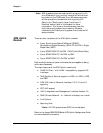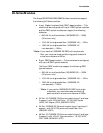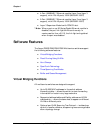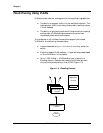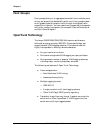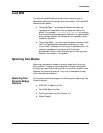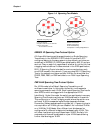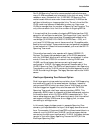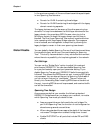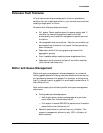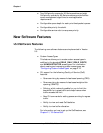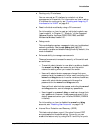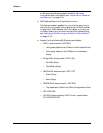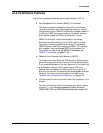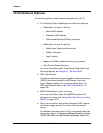
Avaya P550R, P580, P880, and P882 Multiservice Switch User Guide, v5.3.1 1-19
Introduction
Per VLAN Spanning Tree is the recommended method whenever
many VLANs are passed over interswitch links, but not every VLAN
resides on every interswitch link. If IEEE 802.1D Spanning Tree
mode is used without care under these constraints, VLANs can be
split due to blocking on inappropriate links. The only time that Per-
VLAN mode may become undesirable is when you have more
VLANs to manage than the number of Spanning Tree Domains. The
only other constraint is to limit the number of outgoing BPDUs.
It is required that the number of outgoing BPDUs be less than 500/
second on all multiservice switches. This means that if you have 50
VLANs you cannot have more than 20 possible paths back to the
root bridge (50 VLANS X 20 LINKS X 0.5 BPDU/sec. = 500), or if
you have 100 VLANs you cannot have more that 10 possible paths
back to the root bridge. These constraints are not generally exceeded
in real networks. If these limits are exceeded, you must use 802.1D
Spanning Tree mode.
This method can easily inter-operate with legacy IEEE802.1D
Devices. The legacy devices become part of the VLAN associated
with the VLAN port binding with which they are attached. In other
words, if there are 3 P550’s in a network running VLANA and
VLANB, and three legacy devices connect up through a port
configured in VLAN A, the legacy devices will become part of the
VLAN A Spanning Tree. The P550’s will participate in two Spanning
Tree domains, one for VLAN A containing three bridges and one for
VLAN B containing 6 bridges. The legacy devices need not be VLAN
aware.
Dual-Layer Spanning Tree Protocol Option
Dual-Layer spanning tree mode is a variation of per-VLAN spanning
tree mode with many of the same features. However, instead of
using normal BPDUs, which are clear (free of VLAN tags) on clear
links and tagged on tagged links, as is the case with Per-VLAN
Spanning Tree mode, dual-layer uses a proprietary BPDU. This
proprietary BPDU is sent to a special multicast address and contains
information about which VLAN the BPDU is associated with. This
has an advantage over per-VLAN spanning trees in that this method
can support multiple VLANs over a non-tagging link, or when
connecting to a bridge/router.
In this mode, legacy bridges remain in separate Spanning Tree
domains, yet loops between the layer 3 and legacy domains cannot
form. For example; if there are three P550 multiservice switches in a
network running VLAN A and VLAN B, and three legacy devices
connect up through a port configured in VLAN A, the legacy devices
remain in their own legacy Spanning Tree and do NOT join the
Multilayer Spanning Tree.




